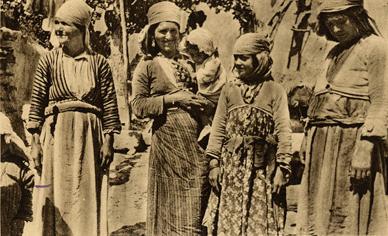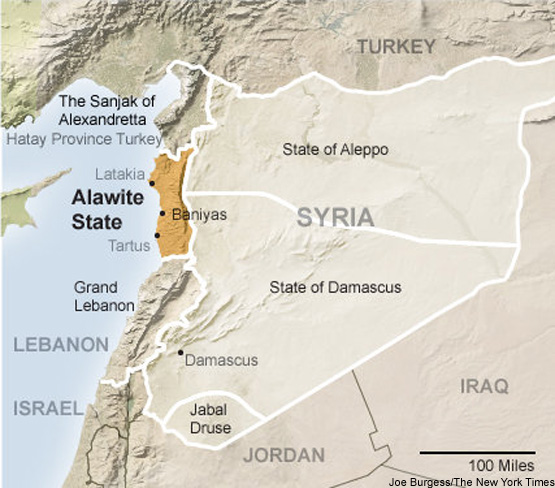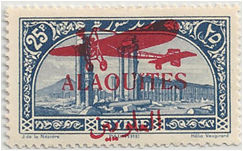ALBUM – view my Alawite State Album
TRANSITION CHART – Syria/Lebanon area Transition Chart
Summary
At the end of WW1, the region of Lebanon and Syria was mandated to France by the League of Nations to administer. Alaouites / Alawite State is located on the central coast of Syria, and is home to a distinct sect of Shia Muslims known as the Alawites. In 1924, the Alawites refused to join a consolidated Syria, instead creating a separate State. Alawite State was renamed Latakia in 1930, and eventually joined Syria in 1936.
Fast Facts
Region: Middle East / Central Asia
Group: Syria Area
Classification: League of Nations Mandate (France)
Prior Regime: The Ottoman Empire / Syrian Federation
Key Dates:
1920, Apr 25 – The region of Syria and Lebanon were placed under French Mandate
1922 – The Alawites were placed within the Federation of Syria
1924, Dec 1 – Alawite State was created as they seperated from the Federation of Syria.
1930, Sept 22 – Renamed to the Government of Latakia
1936, Dec 5 – Latakia joined the Syrian Republic
Following Regime: Government of Latakia
First Stamp Issued: Jan 1, 1925
Scott Catalogue: (Alaouites) #1-49, C1-C21, J1-J10
Pick Catalogue: none
Brief History of Alawite State

The Alawites are located in the mountainous coastal region of central Syria.
The Alawite people are known to follow a particular “secretive” sect of Shia Islam, and for centuries maintained their distinction in this small corner of the Ottoman Empire. The Alawites were primarily peasants, and were often dominated by the majority Sunnis of Syria and the Empire. Initially, the Alawites were separated in the 1920 mandate, but in 1922 were combined with Damascus and Aleppo into a Syrian broader Federation.
When the Federation was solidified into the “State of Syria” on 1 Dec, 1924, the Alawites refused to be part. Instead, they chose to create their own identity by forming a separate “Alawite State”. Segregated by geography and religion, the Alawites had little participation in the unsuccessful 1925-1926 “Great Syrian revolt” against the French.
Sunni landowners living in the more urban areas of the state, began advocating joining a greater Syria state, while the more rural Alawites supported continued separation. In a French concession to Arab nationalists, Alawite State was renamed the “Government of Latakia” on 22 Sept, 1930. As Arab nationalistic fervor continued to grow, the voice of the Sunnis were able to marginalize the Alawite protests. Eventually, on 5 Dec, 1936 Latakia re-joined Syria. Full independence was granted to Syria in 17 April 1946, as the mandate period came to a close.

Stamps
 ALBUM
ALBUM
Although the French never issued stamps specifically printed for Alawite State, stamps of France and Syria were overprinted in both French (Alaouites) and Arabic (العلويون) and used for postage. The large varieties of overprints make a great subject for collecting.
The first stamps for the state were issued on 1 Jan, 1925, consisting of stamps from the “liberty” series and the “Pasteur” series of France overprinted, and surcharged with the currency of the region.
Shortly afterwards, in March of 1925, stamps of Syria replaced those of France as the issues overprinted for use in the Alawite State. The Syrian stamps, which featured beautiful pictorials within the region, were overprinted in various fonts and colors with the name “ALAOUITES” in both French and Arabic.
Beginning in 1926, due to changes in postal rates and currency fluctuations, Syrian stamps were surcharged with new, higher values, and these new rates were also reflected in Alawite State.
Additionally, air post and postage due stamps were overprinted on both French and Syrian Stamps. Initially the air post stamps were only overprinted “Avion”, but soon replaced with the well known monoplane overprint (in black or red), which adds a distinct interesting feature for stamps of this region.
Since all Alawite stamps are overprints, there are a myriad of interesting variations, many of which are rarely seen. Inverts, double overprints, variations in color, and more are recorded in the catalogs.
Stamps of Alawite State were replaced with stamps of the Government of Latakia in 1931.
Banknotes
The Lebanese-Syrian Livre (Pound) were used throughout the French Madated area of Syria/Lebanon.
Links
French Mandate of Syria and Lebanon
Stamps of Distinction: Alaouites
Alaouites – bigblue 1840-1940 blogspot





Everyone, perhaps somewhat off-topic, however when I was a boy (many years ago in the first half of the 20th century) another of my collecting hobbies was cigarette/cigar/cheroot/packets and pipe tobacco tins. I clearly remember a tin, though the brand I cannot recall, which described the tobacco as being ‘finest Latakia’. I wonder if that was a type of tobacco plant, similar to Virginia, rather than an accurate geographical area? There were brands of cigarette which had Turkish tobacco (i.e. Passing Clouds and Lucky Strike), so maybe the description was a marketing ploy considered to add a certain glamour and mystique to westerners perhaps?
Roger, interesting comment.
I did a quick google search and find that (according to Wikipedia): “Latakia tobacco (Arabic: تبغ اللاذقية) is a specially prepared tobacco originally produced in Syria and named after the port city of Latakia. Now the tobacco is mainly produced in Cyprus.
Did’t know that they grew tobacco in Syria.
Michael